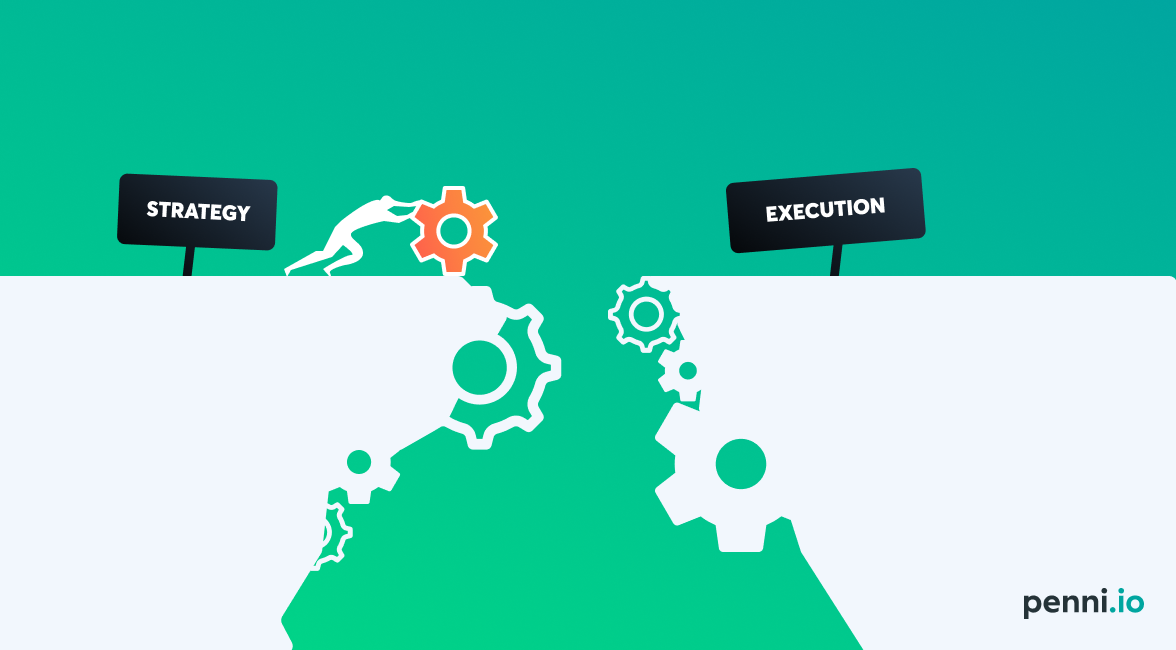Digital Bancassurance: How to Fix the Gap Between Strategy and Execution

A win-win situation is top-notch. A win-win-win situation is digital bancassurance. 'Cause it benefits both the banks, insurers and consumers. Yet many banks and insurers fail to carry it through. You don’t want to be a member of the flop club, right? Didn't think so. Read along to find out how you succeed with the partnership model.
For more than 20 years, everyone in the financial sector has heard and talked about the magical wonderland aka partnership model known as bancassurance.
It’s a model under which insurance companies and banks partner up to sell insurance products to the bank’s customers. The partnership model is on the rise again, with a digital spin this time.
This means a digital partnership that can benefit both banks, insurers, and consumers. If it’s well-executed. But the degree of success varies from country to country.
Many have attempted it, though.
Some have even managed to lay a strong foundation for it and change their business models.
Yet, hardly any have managed to unwrap and get the gift in the financial Kinder Egg.
Just what’s inside that egg? Let’s have a look at what bancassurance promises for banks and insurers that can make a (digital) partnership work:
- Lower customer acquisition and marketing costs (for banks and insurers).
- Better combined ratio (stronger data for risk calculation for insurers).
- Higher penetration via convenience (for banks and insurers).
- Operational efficiency (for insurers).
- More profit in general (for banks and insurers).
- More relevant offers (for customers).
- Higher perceived trust (for banks and insurers).
- Higher loyalty and retention (for banks and insurers).
These are the main benefits. They come into play whether we’re talking about commercial insurance products, personal insurance, life insurance, or other types of coverage.
With all the benefits to luxuriate in, who wouldn’t want to make the partnership work?
Especially, when you consider that Axis Bank had a 30% higher fee-based income in 2011 after teaming up with Max Life insurance. Or that the State Bank of India improved almost all of its customer lifetime value metrics after it started offering insurance products under a bancassurance model.
As another example, the value of bancassurance is greatly present in the investment Allianz is rumoured to make to land a deal with BBVA. And in one of the most ambitious, at least on paper, partnerships between ING and AXA.
So, it’s just not the theory that proves the potential of the partnership model. Reality does too. So why do so many banks and insurers fail to make it work? I have a clear idea.
A superb strategy… that goes up in smoke
Bancassurance promises more profit and success for insurers and banks. At the same time, it eases the insurance purchase for consumers by giving them a simple digital one-stop shop for all the financial products they need.
Companies don’t go into this in a haphazard manner. Whenever banks and insurers choose to collaborate, they create a strategy based around:
- Shared use of data and insight.
- R&D and business development.
- Test-learn-adapt cycles.
- Harnessing each company’s competencies.
- Moving from a reactive to a proactive approach.
Once the strategy is set, the new bank and insurer begin brainstorming ways to cross-sell and upsell insurance products.
Things often fall apart at this stage.
We have seen Private Wealth C-level people come up with a cross-selling strategy for customers who want to buy a helicopter. Makes sense. I mean, where else would you go with your helicopter insurance needs, right?
After this ideation process, it’s time to put the strategy into action. This is when everything that was laid out on paper, discussed in meetings, and spelt out will crystalise into something that can be carried out. The thing with crystallisation, though, is that it’s unpredictable. When it comes to bancassurance, putting a partnership into action usually ends up one of two ways (or somewhere in between):
Outcome #1
The financial advisers and bankers end up having to sell insurance with their banking products as well as offer advice on that insurance. This puts these advisers and bankers in an “oh f**k”-position because they simply don’t have a strong background in insurance.
It would be like booking an appointment with a hairdresser who has ever held scissors in his hand: You’ll get a dreadful customer experience. And a worse hair crisis than you walked in with.
So, the most effective way to deal with this is by giving these employees thorough training, but that can be quite costly. Hereby above-mentioned benefits 1-6 and 8 fail.
This tendency has increased with IDD (Insurance Distribution Directive), where there now are examples of banks who due to IDD requirements do not wish to carry out the consultancy process for insurance and instead for selling directly are now generating leads.
Outcome #2
Financial advisers and bankers don’t directly sell insurance products. Instead, they send leads to the insurance company/agency. Then the customer will be called to set up a meeting to go over their insurance options.
Sounds just as ‘convenient’ as buying a smartphone without a charger included. Yeah, I know, what company, in a sane world, would offer such a bad service to their customer?
Oh, wait…
A fruit-named tech giant actually does that.
Anyway, getting back to my point: This makes no important difference to the way the consumer buys insurance - there’s just a different name on the policy. Hereby above-mentioned benefits 1, 6 and 7 fail. Big time.
Neither outcome #1 nor #2 are satisfying. And both of them fail to deliver on the great benefits promised by the bancassurance model.
Execution is king
Ambitions are rarely met in the execution stage. However, it should be easy to carry out ideas as basic as these. The problem is that they’re hardly ever brought up in the ideation phase in fear of they sound too conservative.
When I request an offer for a car loan with my bank, there should be a simple checkbox asking me whether I want to throw auto insurance into the mix. That’s it. Simple.
And taking into account that data related to the car loan hold 80-90% of the risk variables of a micro tariffed insurance price, a price can be generated simply by the customer giving consent to use their data to calculate the price.
Insurance is just a means to an end (in this case, owning and protecting the car). So, anyone who offers a way to fix the means by a simple click is going to be a winner in the eyes of the customer.
Yet, execution often falters. There are three major reasons for this gap between strategy and execution:
- Legal compliance.
- Shortage or lack of prioritisation of IT resources.
- Focus on short-term gains.
And it doesn’t help that ideas made early in the process often end up falling short because the digital infrastructure required to support their needs has to be developed from scratch.
Taking digital infrastructure dead seriously
Developing a digital infrastructure for a bancassurance partnership is more affordable than the cost of training employees and carrying-on an analogue sales process. Even though it’s costlier, the latter is usually the fallback strategy because it is more familiar to both partners.
Successful digital transformations don’t happen unless the businesses involved view the digital framework as a new infrastructure. Moving to digital infrastructure is a key change that affects the business processes, products, and even the whole distribution of power, opportunities, and revenue streams. For a simple example of this, think about how a doubling of offers exposed without raising the cost of sales could affect a price risk strategy.
Legal compliance can sometimes hinder digital development, but the implementation of the IDD should drive digitisation forward - not hold it back.
Think about it:
Who is the weakest link when it comes to insurance mediation?
Humans, of course.
Even if you spend years and years training them, you can’t guarantee, predict, or control what an agent will say to the customer. Going digital gives you the benefit of automated documentation of the mediation process, in case you ever need to use it.
When it comes to bancassurance, so many good intentions end up falling short in the execution. That’s one of the reasons why we started offering digital capabilities as a software as a service platform.
We don’t want good intentions to get lost in translation. From now on, every new bancassurance partnership can start with their product, their customers, and the digital infrastructure they need.
Want to know more about digital partnerships and how they can help you grow your sales? Take the edge of here.
Special thanks to our expert Simon Bentholm.



